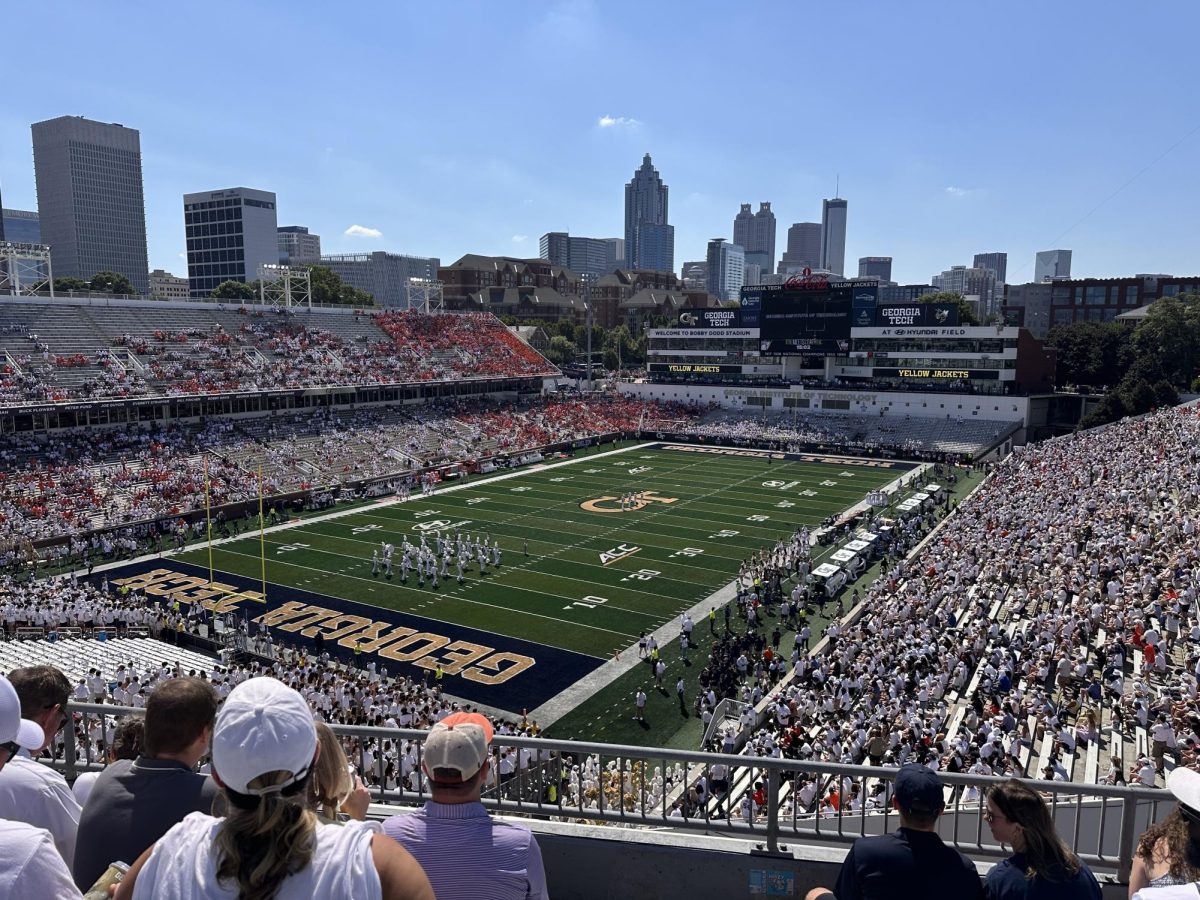Baseball Team Bucks National Diversity Trend
March 9, 2009
From March 2009:
“The many of us who attain what we may and forget those who help us along the line we’ve got to remember that there are so many others to pull along the way. The farther they go. the further we all go.”
Jack “Jackie” Roosevelt Robinson uttered this infamous quote almost half a century ago as he electrified fans, inspired a nation, and shattered America’s color barrier by becoming the first African American ever to play on any Major League Baseball team, the Los Angeles Dodgers.
The United States is presently home to over 305 million people, only a tiny sliver of the six billion individuals living on the planet. In a nation where, as of 2006, almost three-quarters of the population was white, Chamblee is grossly disproportionate. A lopsided 47.5 percent of the students are African American, while Caucasian students consist of 31.8 percent, followed by Latino students at 7.7 percent and Asian students at roughly 8.9 percent.
These statistics contribute greatly to the racial diversity spreading amongst Chamblee sports. Chamblee baseball is a prime example.
“From a professional standpoint, the diversity is obviously dropping, which is unfortunate,” said head coach Brian Ely, who also played on the Diamond Dogs from 1993 to 1996 during his high school career. “From our school standpoint, however, the ratio increases as our population’s demographic changes. This is not a microcosm of the baseball world.”
In 1950, according to the Chamblee High annual, there were no black players on the varsity or junior varsity level because only white students were allowed to attend. By 1975, only two or three were even considered. Currently, the Chamblee varsity baseball roster holds nine black players out of 18, a 41.8 percent difference over the national average.
In 1975, approximately 27 percent of Major League Baseball players were black; the current percentage stands at less than ten percent, declining from 8.4 in 2006 to 8.2 in 2008. The NCAA offers a total of 16,462 basketball scholarships and a fractional 5,594 baseball scholarships to incoming college athletes.
“Most black American athletes at the professional level play football or basketball,” said William B. Gould IV, former chairman of the National Labor Relations Board in an interview with the Globe Newspaper Company. “The black youngster who hopes for a free ride through an athletic scholarship cannot seriously consider baseball, given the opportunities available in football and basketball.”
[In] A Harris Poll which was conducted in 2008, 30 percent of the people surveyed listed football as their favorite sport, twice as many as those who chose baseball. Furthermore, despite football having a mere 16-game schedule as opposed to baseball’s 162-game schedule, football’s American TV viewer ratings now rank above those of any other sport.
“The media exposure for football and basketball has played a large part in the changes, along with overall family structure and traditions,” said Ely. “I’m afraid that in certain communities that baseball hasn’t skipped a generation, but been lost, a permanent thing.”
However, despite the alleged loss of interest in baseball, Chamblee will still have to play such teams as the talented Tucker, powerhouse Marist, and contender Forsyth Central for a region title.
“Practically every team we play is either predominantly black or white with very low exceptions,” said Ely. “Because of that, other teams don’t know what to make of us to a certain degree.”
In well-known movies such as Remember the Titans and Glory Road, racial tensions caused deep rifts in the team, resulting in less-efficient teamwork and a tougher road to victory.
“Because we’re not strictly black or white, we interact with people from all over,” said Ennis Coble. “That’s how it has been at Chamblee for a while and as a whole, we all accept it.”
Whereas acceptance is necessary for a team’s survival and strength to legitimately contend in a region as tough as 6-AAAA, it takes more than just that to create the unique and proficient chemistry needed for a championship team.
“[The racial differences] do not present a problem,” said Paul Strychalski. “It actually is more of a bonus.”









